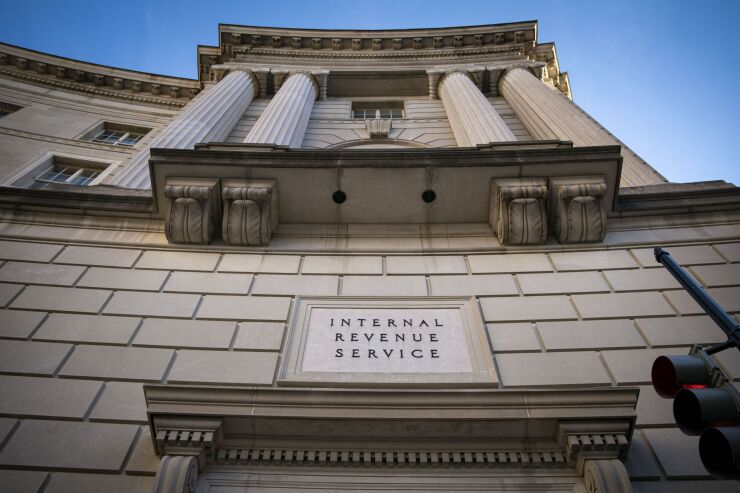The Internal Revenue Service released the
The projected gross tax gap of $696 billion reflects the difference between the projected "true" tax liability and the amount of tax that is actually paid to the IRS on time. The projections represent an increase over the tax year 2014-2016 estimates and the tax year 2017-2019 projections. The 2022 projection translates into an increase of $200 billion over tax years 2014-2016.
But the IRS pointed out that the increase for 2022 is similar to the 41% increase in the economy since the 2014-2016 time period as measured by gross domestic product. The new study also shows the voluntary compliance rate among taxpayers remained steady at 85%. The IRS believes the tax gap increase ultimately reflects growth in the economy and changes in the sources of income as opposed to a change in taxpayer behavior involving filing or paying their taxes.

The new tax gap projections reflect the time period before the IRS began increasing tax compliance work after passage of the Inflation Reduction Act in August 2022. Since that time, the IRS has increased compliance activity in different areas thanks to the extra funding. For example, the IRS collected
"This is a critical study about the nation's tax system, and the results underscore there remains a sizable tax gap between taxes that are legally owed but aren't actually being paid," said IRS Commissioner Danny Werfel in a statement Thursday. "While the bottom line for the new tax gap numbers shows the increase basically reflects growth in the larger economy, the size of the gap also vividly illustrates the ongoing need for adequate funding for the IRS. We need to focus both on compliance efforts to enforce existing laws as well as improving service to help taxpayers with their tax obligations to help address the tax gap. Since passage of the Inflation Reduction Act in 2022, we have taken important steps to begin improving tax compliance. While our recent work will not be fully reflected in the tax gap analysis for several years, we will continue to provide routine, interim updates on how enhanced enforcement on complex areas of tax evasion and delinquency impacts compliance."
The new projections appear in
The IRS broke out some of the numbers:
Non-filing, which means tax not paid on time by those who do not file on time:
- $63 billion in tax year 2022, representing 9% of the gross tax gap.
Underreporting, which reflects tax understated on timely filed returns.
- $539 billion in tax year 2022, representing 77% of the gross tax gap.
Underpayment, or tax that was reported on time, but not paid on time.
- $94 billion in tax year 2022, representing 14% of the gross tax gap.
Net tax gap
Late payments and IRS enforcement efforts are expected to yield an additional $90 billion on tax years 2021 and 2022 returns, resulting in a projected net tax gap of $617 billion and $606 billion respectively.
Between tax years 2017-2019 and tax year 2022, the estimated tax liability increased by about 27%, roughly the same increase as the gross and net tax gaps. Much of these increases in true total tax liability and the gross tax gap can be attributed to economic growth.
The IRS acknowledged, though, that the tax gap estimates and projections cannot fully account for all types of noncompliance.





